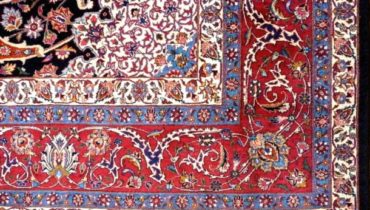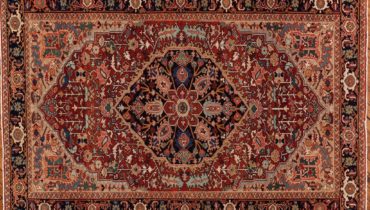The basic technique of rug making were first developed in the East. Traditional Oriental rugs are made on vertical looms strung with 3 to 24 warp (vertical) threads per cm (8 to 60 per inch of width. Working from bottom to top, the rug maker either weaves the rug with a flat surface or knots it for a pile texture. Pile rugs use 5- to 7.5-cm (2- to 3-in) lengths of yarn tied in Turkish (Ghiordes) or Persian (Sehna) knots with rows of horizontal weft yarn laced over and under the vertical warp threads for strength. After the carpet is completely knotted, its pile is sheared, and the warp threads at each end are tied into a fringe. The finer the yarn and the closer the warp threads are strung together, the denser the weave and, usually, the finer the quality. Fine-textured and valuable rugs have 62 or more knots per sq cm (400 per sq in) ; coarse-textured rugs may have less than 8 per sq cm (50 per sq in). In traditional Scandinavian weaving (rya) the knot is actually tied like the Turkish knot, but the pile alone is 5 to .5 cm (2 to 3 in) long, and the rows of knots are separated by 10 to 20 weft rows.
Flat-woven rugs are lighter in weight and less bulky than pile rugs. The best-known and earliest type is the kilim, which has plain weave made by shooting the weft yarn over and under the warp threads in one row, then alternating the weft in the next row. The soumak type is woven in a herringbone pattern by wrapping a continuous weft around pairs of warp threads. check with us for more.
WhatsApp+85264256702 info@coshmere.com
Summer sale discount off 25%!Shop Now !!!
Traditional Hand Woven Oriental Rugs
Leave a comment




